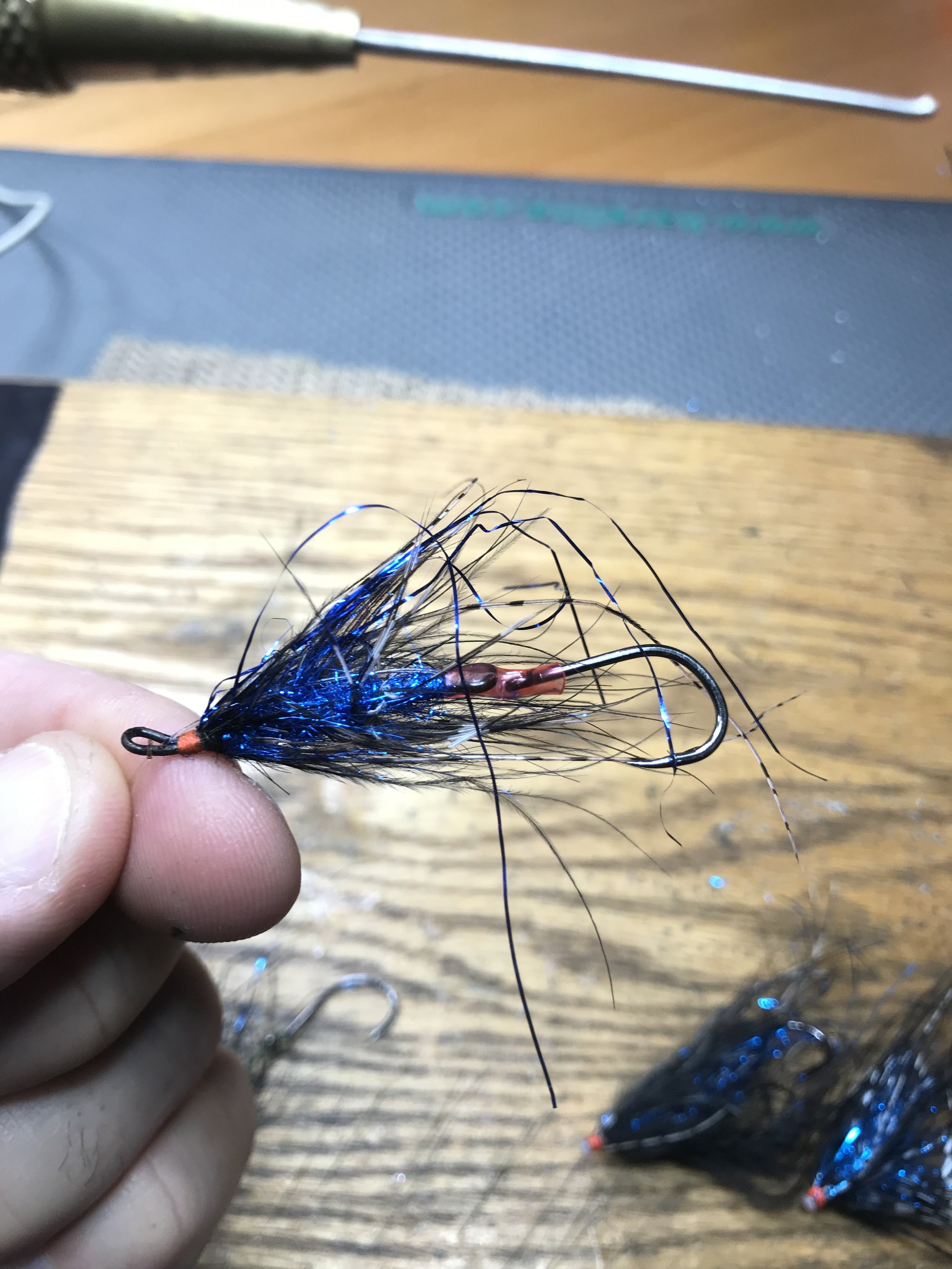A Moral Obligation.
A variety of Hobo spey flies (top to bottom)
1. Commercial tied hobo with trailing loop that is far too long.
2. One of my own ties which has been taken out of service due to a hook orientation which is too far back.
3. Hobo tube fly (note hook orientation)
4. Heavily used Hobo tube fly (note hook orientation) even though a lot of the materials have worn off, the fly it is still fishable and less lethal.
The following article speaks to my personal experiences while fishing and guiding. Not everyone will agree with them or see it the way I see it. You are welcome to post comments below. I don’t claim to know all the answer and anyone who thinks they do, I consider to be daft.
Trailing hooks that are too long are killing the fish we love and I feel a Moral obligation to try and educate as many people as possible about it.
It’s been written about and spoken of before. I’ve been guilty of tying, fishing and promoting the use of these in the past. It is time that we take a very close look at what we are doing with stinger loops for the good of the fish that we so highly regard.
I’m mostly referring to steelhead fishing in this article as I’m not as exposed to stinger loop style flies in other fishing and guiding that I do. I use the hugely popular Hobo spey fly as an example. I’m certain that it’s initial design was not tied in this manner, but some of the commercial duplications have the trailing hook set way too far back. There were some around (not sure of manufacturer) a few years back that after hooking a fish or a snag they would extend out even further, sometimes trailing back nearly equal the length of the materials, behind where the materials would end. I’ve seen far too many fish hooked deep into the gill rakers on these flies. Maybe its coincidence or maybe due to the flies huge popularity and every other guy who is fishing has one tied on . I will say it has happened often enough with these commercially tied Hobos to take notice.
I don’t put all the blame on the manufacturers of these flies. We have an obligation after being presented this knowledge to retire or re-rig any flies which have been tied in this manner, or the materials have deteriorated down to a place where the hook is trailing back beyond where the materials end. Have a look at your flies and recheck them after some use, the marabou can become worn down or shortened slightly from tips breaking off. Marabou is a very durable material for how well it moves, but it is not indestructible. One of the great features of the hobo spey fly is a sparseness, but sometimes this can come back to bite you. I’m not sure what happens when a steelhead takes a fly deep or why it happens, but again it has been repeated often enough to take notice.
Now, having a box full of these flies doesn’t mean you have to throw them all out. There are a couple options to make them less lethal. If the fly is tied on a Waddington shank. You can take the hook off and make a couple loops through of trailing material through the back hole in the shank and shorten it to where you have just enough space to put the hook back on.
The trailing loop on this commercial tie is far far too long. At the maximum the loop should just allow the hook to pass through to switch out hooks. Even then you have to observe wether or not the materials come back beyond the hook.
With a couple wraps around the Waddington shank rear loop it shortens up the fatally long trailing material to the point where the hook barely passes through. In my opinion this fly is DONE anyway (I’m just using it as an example) The marabou has deteriorated too much and there is not enough material back to, or beyond the hook to make it safe to fish. (You can get a better look at the degree of deterioration on this fly in the photo at the top or the photo two down from this)
Another option is to cut off the braid trailing loop material and thread the tippet through the eye, then the rear eye and then through a piece of junction tubing then fasten to the hook. You can then seat the hook and the junction tubing on the rear eye of the Waddington.
Shown here is another option for rigging hobos that you’ve already purchased and deemed unsafe. Thread the tippet through the front eye, down the back of the fly and through the rear eye, through the piece of rubber juntion tubing and then tie on the hook
Tighten up on the tippet and thread the tubing up onto the rear Waddington loop and seat the hook. Voila Again this fly is just an example. Its far too worn out and in my opinion not safe to fish.
One straightforward solution for these patterns with single, front stage marabou, is to tie them on tubes. It gives you a lot more control of your hook orientation and I see a lot less mortally hooked fish with tubes. A far higher percentage of my steelhead flies are now tied on tubes.
Seen above are Two hobo tube flies. The top one is used but not tho the degree of the lower one. Note the orientation of the hook to the end of the materials. Even though the bottom one has been heavily used and is worn down and battered the hook is still oriented up inside the materials.
If this topic interested you I speak a little bit to the tying of this fly in another post.






